Background:
In the last post, I discussed installing and measuring vehicle performance with the APR PEX open intake and Blaze ATOM Race intake.
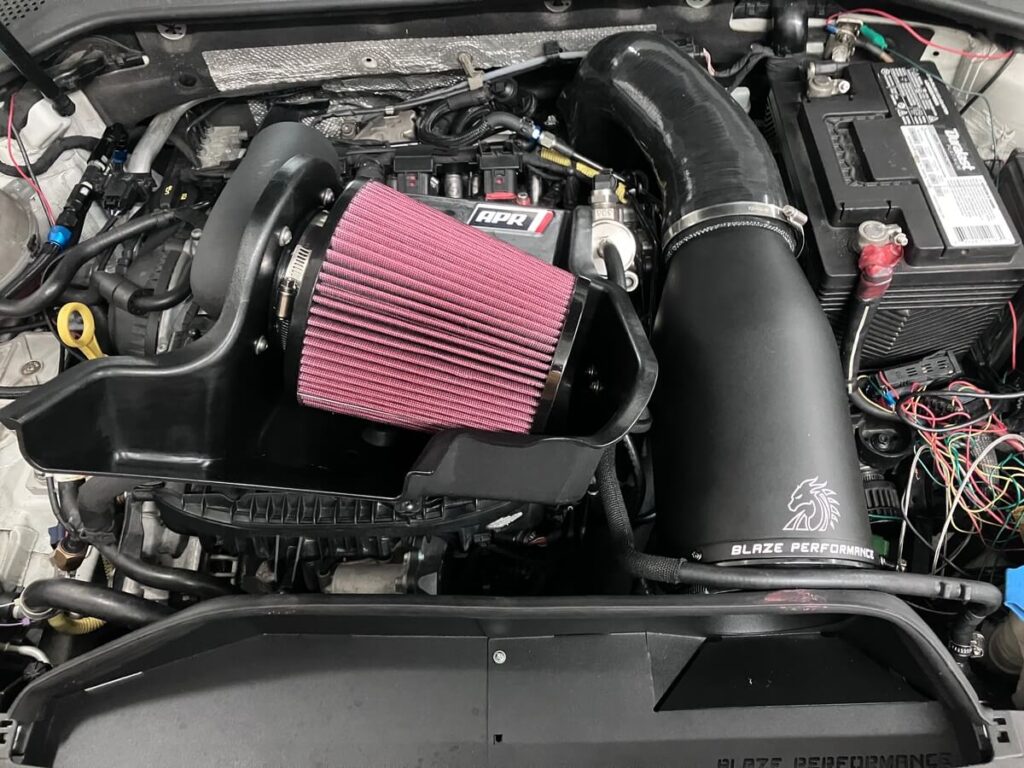
No significant difference was found between the two intakes. This outcome differs significantly from reports from an EQT customer that claimed switching between the intakes produced a significant change in the turbocharger wastegate duty cycle and power output on a dynamometer.
I hypothesized that the cause of the difference was not the intake swap, but the change from a stock-size turbo inlet elbow to the Blaze turbo flange made for a hybrid turbocharger.
Having already compared the APR open intake that the EQT customer used, combined with an MST hybrid turbo inlet elbow and the Blaze ATOM Race intake, and finding no difference, in this post, I discuss the results of swapping the MST hybrid elbow for a stock-size elbow.
For this test, the Epman turbo inlet elbow, a knock-off of the APR turbo inlet elbow, is used. The EQT customer used the APR turbo inlet elbow in their comparison.
Below is the difference in outlet diameter of the Epman elbow and the MST hybrid elbow.
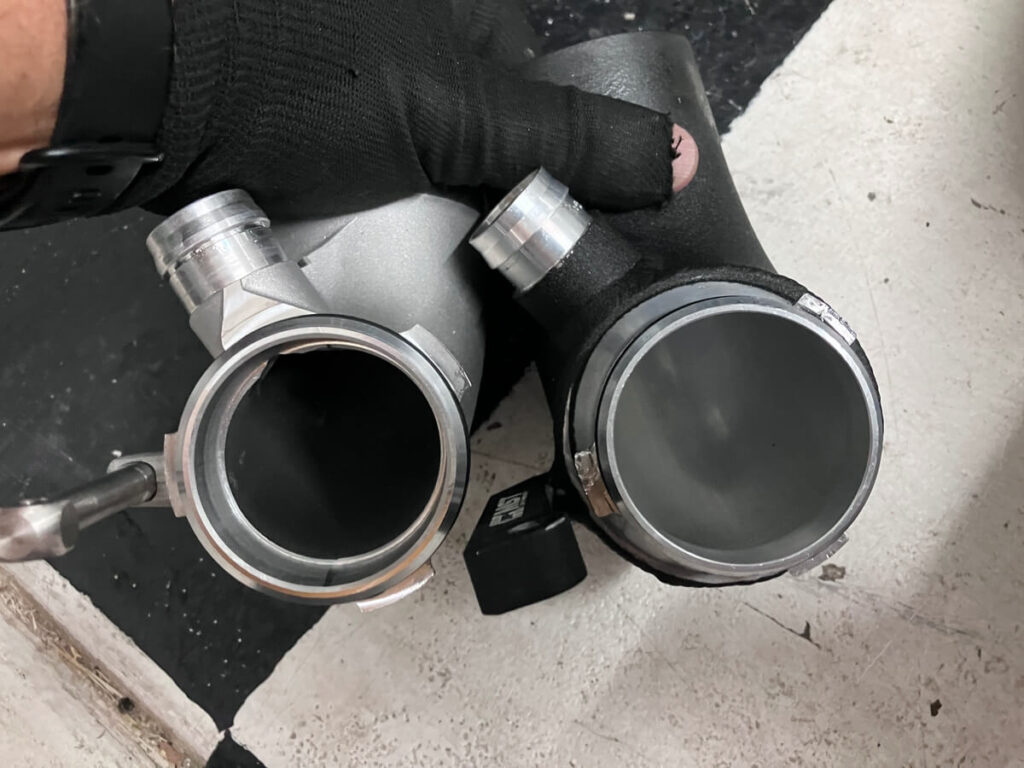
Along with the Epman TIP, the MST inlet hose is replaced with a Racingline inlet hose. This is done because the Epman/APR elbows are sized to fit a 2.75″ diameter accordion hose, and the Racingline hose fits a stock-size elbow, whereas the MST inlet hose is sized for a 3″ inlet elbow.
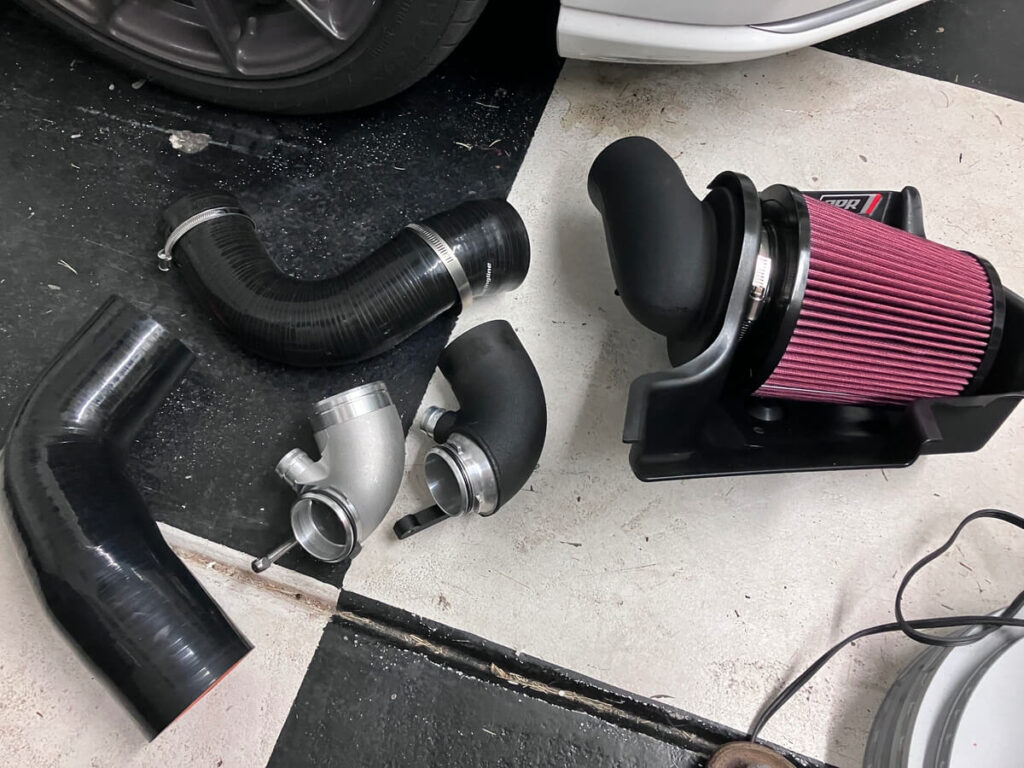
The Epman (APR) inlet elbow is installed, and the Racingline hose is attached.
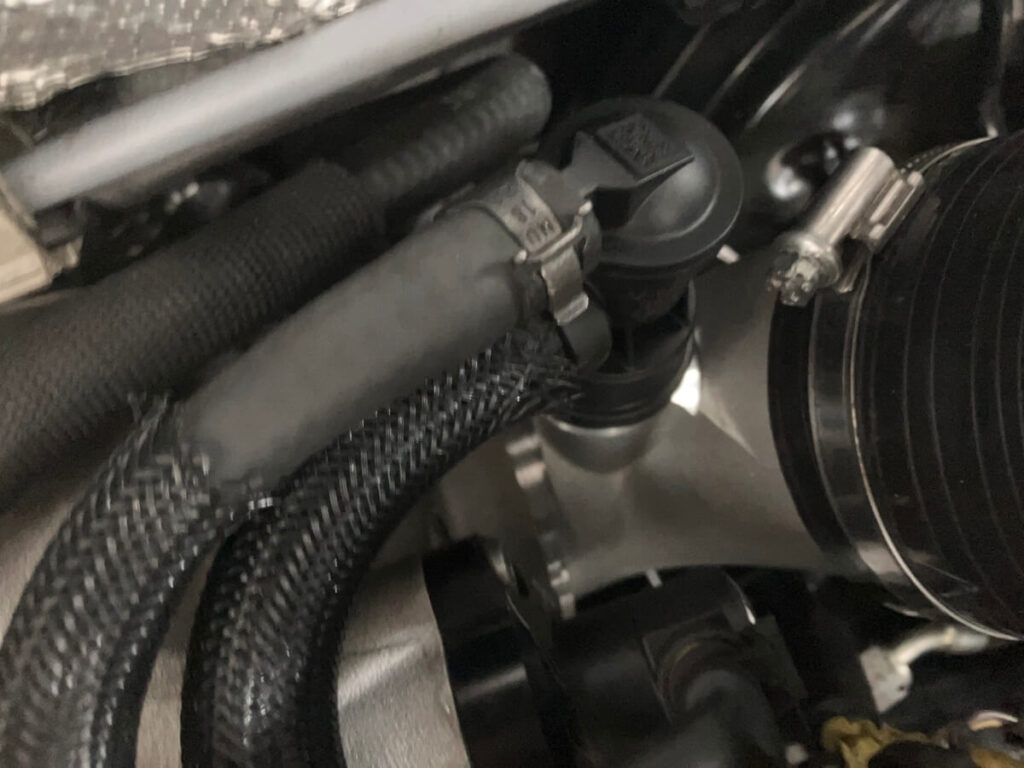
The rest of the vehicle setup remains unchanged from what was described in the prior post:
- Russell Road & Racing E30 Tune
- Mabotech M520h hybrid turbocharger
- Intake 1 – APR PEX intake / VWR inlet hose and Epman TIP
- aFe Power Charge Pipes
- Mabotech Stock Mount IC
- MPI / RS3 LPFP / HPA HPFP
- Baun Performance 4″ GESi Cat DP / 3.5 ” mid-pipe
- AWE track exhaust
Test Results:
The outside air temperature (OAT) during logging with the Epman TIP is approximately 5 degrees Fahrenheit lower than during the logging session with the MST components. As the last post showed, a temperature difference this small does not have a noticeable effect on the output variables of interest.
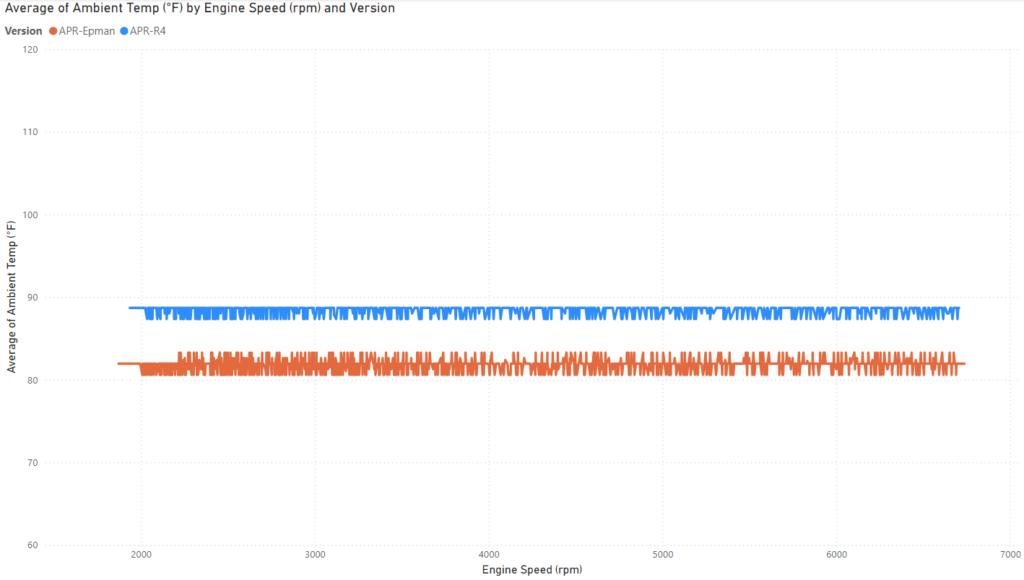
The intake air temperature (IAT) during each of the logging sessions is very similar.
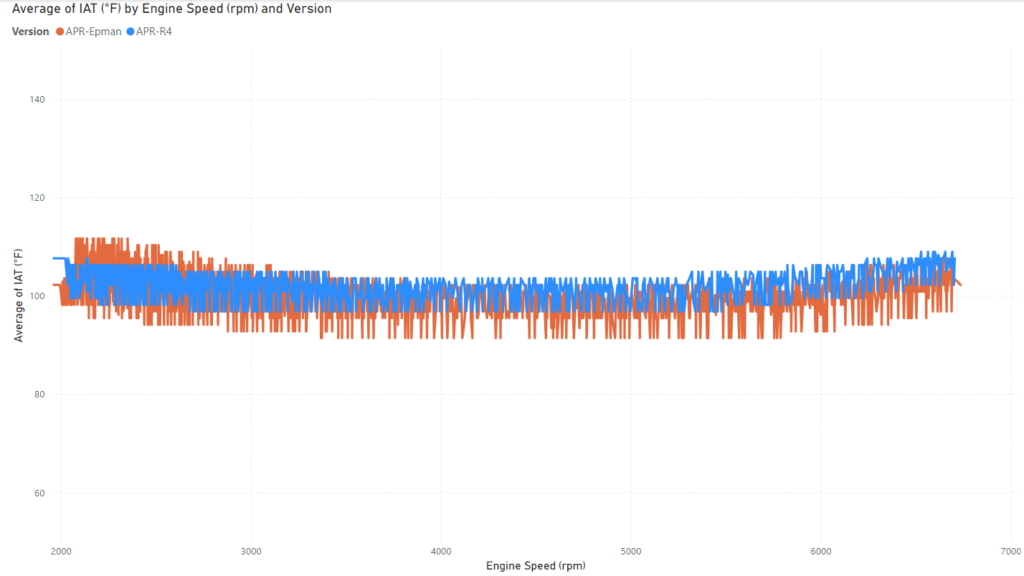
With the Epman elbow installed, the boost pressure drops as the engine speed passes 6,000 RPM.
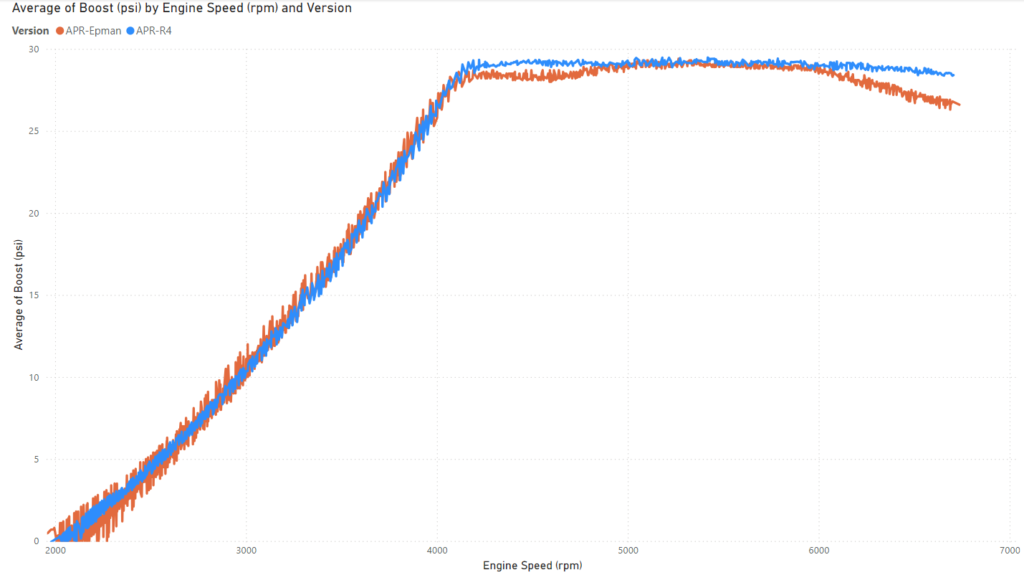
There is a significant difference in the wastegate duty cycle (WGDC) between the two sessions. The replacement of the MST elbow with the Epman elbow correlates with an increase of the WGDC.
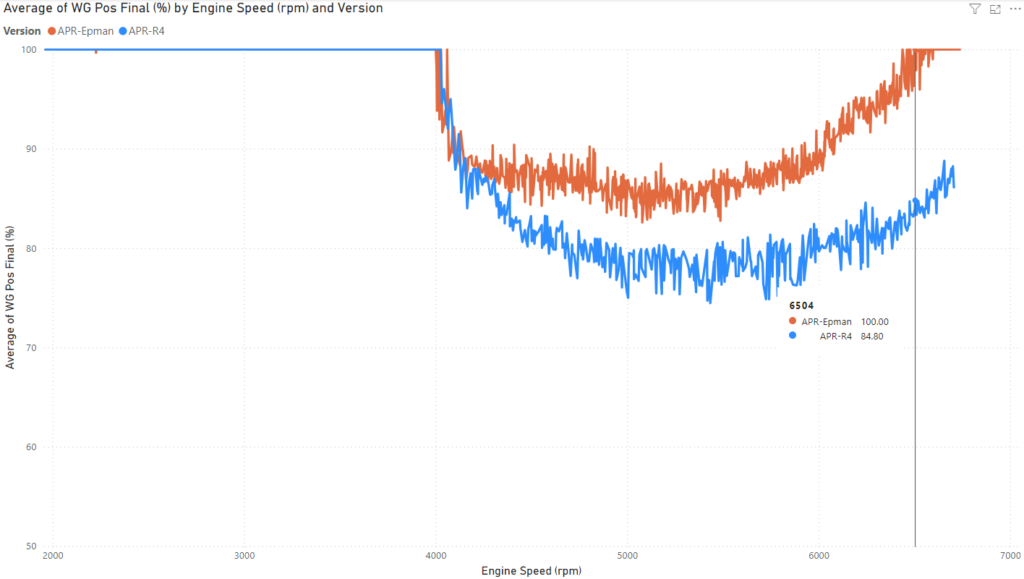
By 6,500 RPM, the Epman pulls reach 100% WGDC, which indicates why the boost pressure starts dropping with the Epman elbow.
There is a 15% difference in WGDC at 6,500 RPM. This is not quite as much as occurred with the EQT customer, who recorded a 20-30% difference, but that person also had a 15 deg F higher IAT during their recording session with the APR intake. The higher IAT may also contribute to their higher WGDC.
All of the pulls made with the Epman elbow are shown below:
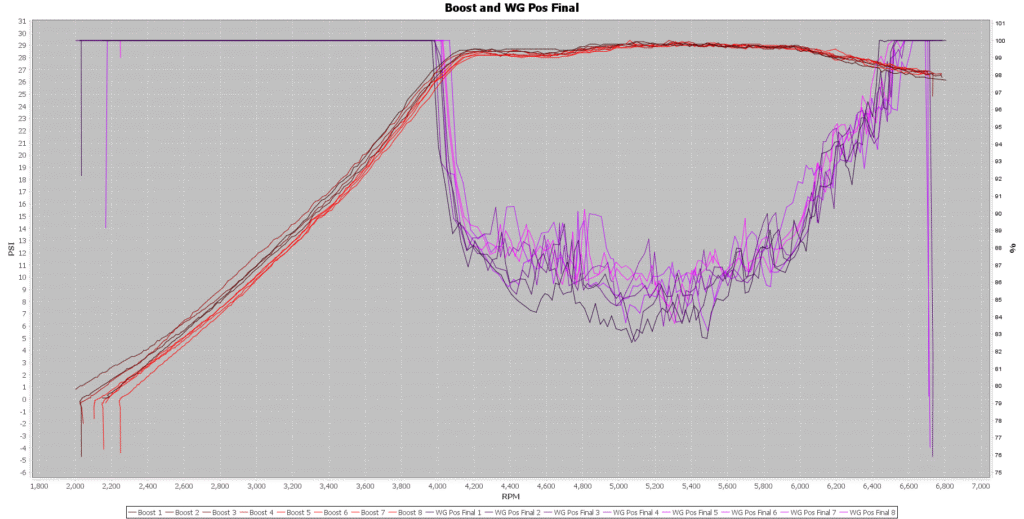
Next, we check the estimated peak wheel horsepower with each setup. Selecting a minimally interesting difference of 5 whp, we require six samples from each configuration. This requirement is met.
A t-test was made using the pull data, and the ~16 whp difference is statistically significant.

Lastly, the Blaze ATOM Race WGDC is added to the chart.
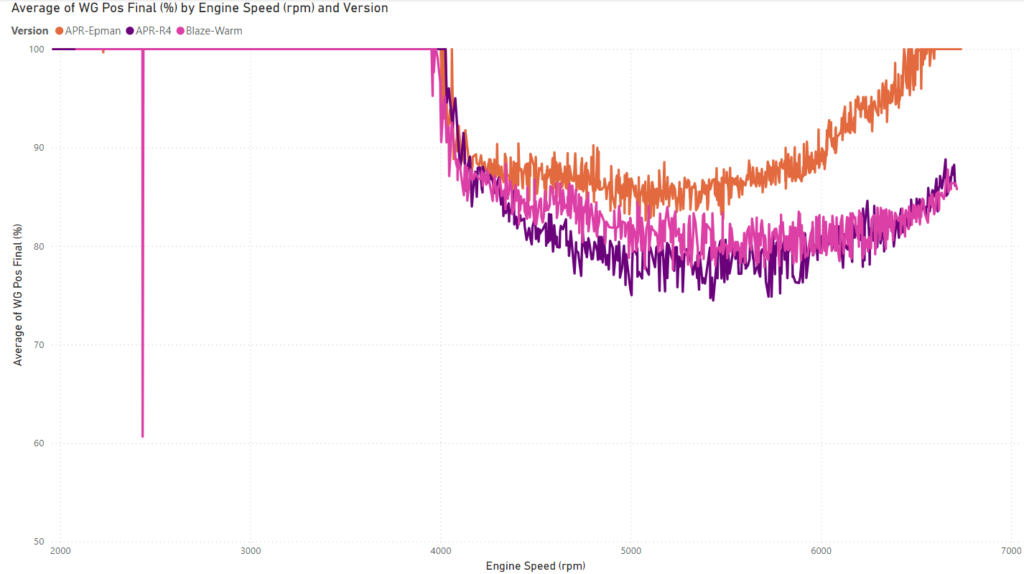
It is evident that the change in intakes did not cause the change in WGDC, but the change to the Epman turbo inlet elbow caused an increase in WGDC.
Conclusions:
The APR Pex open intake, along with an Epman turbo inlet elbow and a Racingline inlet hose, is installed in the Mk7 GTI. A series of third-gear pulls are made to record engine and vehicle performance.
The change to the Epman turbo inlet elbow from the MST V2 inlet elbow correlates with an increase in the turbocharger wastegate duty cycle. The WGDC increases by up to 15% and reaches 100%, leading to a decrease in the turbocharger boost pressure and a 16 whp drop in estimated peak wheel horsepower.
The results of this test do not support the conclusion reached by EQT customer Joseph Galloway that the APR intake causes an increased wastegate duty cycle when compared with the Blaze ATOM Race intake.
References:
What about that advertising from Equilibrium Tuning that presents charts showing differences with mystery intakes?

Familiarize yourself with Occam’s Broom:
